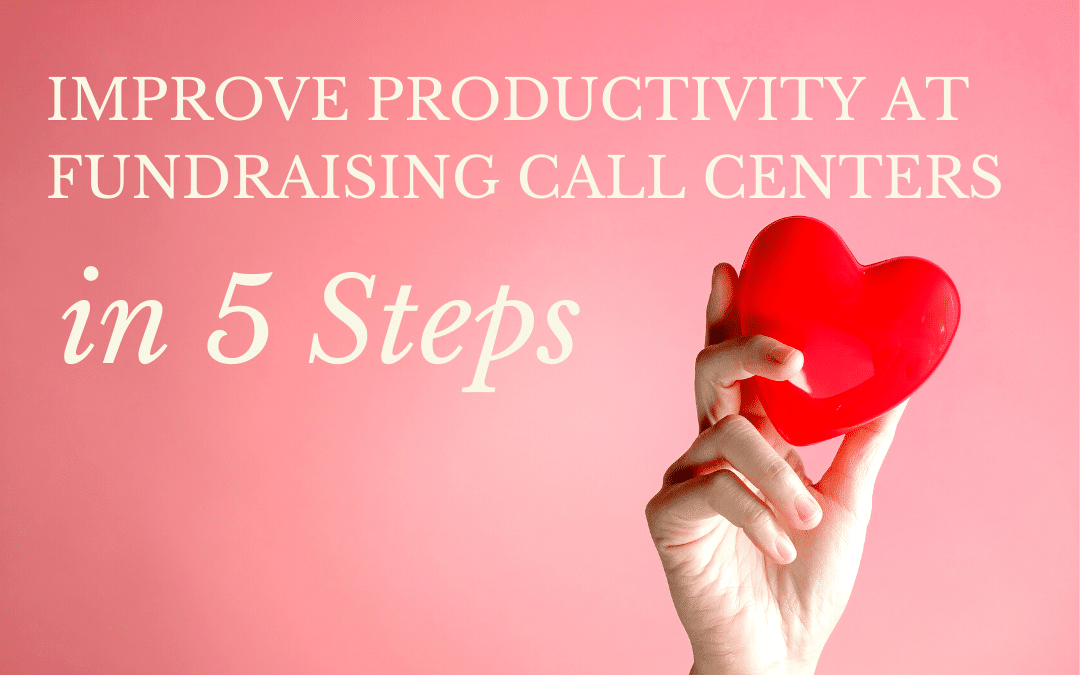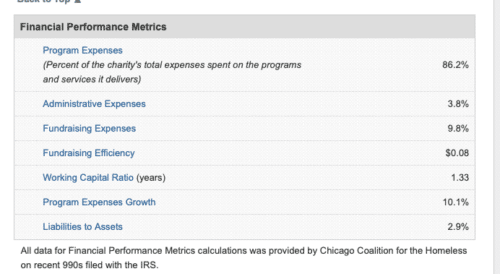Don’t miss this crash course on turning fundraising call centers into highly effective money-making machines
For most nonprofit organizations, fundraising call centers are the lifeblood of their operations. Why? With corporate giving, foundation grants, and national endowments, it seems as though there would be funds enough that a few volunteer nights could close the gap by calling donors.
That might be partially true, but according to Nonprofits Source, individual donors contribute around 72% of the annual contributions to charitable organizations.
However, the difficulty for smaller nonprofits is that they don’t have the resources to reach those donors. The U.S. Bureau of Labor Statistics (BLS) reports that approximately 70% of nonprofits in the U.S. employ fewer than 20 people. Of those, more than half employ less than five people.
With volunteers taking care of everything from sealing envelopes to preparing food to management tasks, it’s clear that fundraising call centers provide a genuine benefit. Professional call centers give small organizations the power of an efficient, focused fundraising operation without the added stress of organizing and training volunteers.
It’s because of this that the efficacy of call centers is paramount for nonprofits. And the reality is that no matter how good any of us are at our jobs, there is always room for growth and improvement.
With features like whisper coaching and automatic emails, Call Logic is your one-stop solution for all of your auto-dialing software needs. Check out a free demo today!
5 Steps to excellence in fundraising call centers
Most fundraising call centers, like many call centers, rely on percentages to bring in donations. The more calls you make, and the more people you reach, the higher your overall success rate is. Indeed, the number of calls you make is a foundational aspect of the work. But there’s so much more to it than that.
For fundraising call centers to truly function at their highest capacity, it’s essential to have a system in place that boosts productivity while bearing in mind the human element of the work. After all, fundraising for nonprofits and charitable events is ultimately about contributing to the betterment of the world.
Step 1. Onboarding
The single best way to engage donors is for call center employees to share their concerns. Every time new people come in, or before any new fundraising campaign begins, it is critical to know the details of the organization on whose behalf you are working. What problems do they solve in society? How do they operate? Whom do they serve?
This shouldn’t be unexpected. A good salesperson knows their product inside and out. They know every benefit, every competitor, and every concern a customer might have. Requesting donations for a nonprofit is not that different. Every person on the team should know the mission, history, and effectiveness of the nonprofit.
Remember, the most successful fundraising campaigns are all about connecting with donors.
Step 2. Know where every dollar goes – and why
This is a natural extension of the onboarding step, but it’s important. Donors will want to know exactly where their money is going and how it’s being used. Here’s an example from Charity Navigator for the Chicago Coalition for the Homeless.
As you can see, 86.2% of their finances went toward program expenses. This is the kind of information donors may want to hear about. It’s important to share the information, but it’s helpful to tell people where they can find the data if they want to look at it themselves.
By contrast, some charities put less than 10% of their yearly finances toward program expenses. While that’s not an ideal number, here’s one thing that could work in your favor should you find yourself fundraising for an organization with higher non-program expenses: knowing how the money is spent.
A good example here is the Southern Poverty Law Center. While 67.8% of their funds go toward program expenses, their accountability and transparency score, in addition to the way they use their funds, gives them an overall 4-star rating on Charity Navigator.
Step 3. Set a goal
This is a vital aspect of fundraising, but it’s all too often neglected. You can’t meet a goal if you don’t know what the goal is. Work in conjunction with the nonprofits you are serving to determine what they need from a campaign. And don’t be afraid to share that goal with the people you call.
Take the next step with this information and ask donors for specific amounts. The less work your donor has to do, the more likely it is they will give.
Marc A. Pitman, a successful fundraising coach, offers some helpful tips when it comes to asking for donations. He points out that asking someone to “support our cause” does little to help you raise the funds you need. Instead, a phrase like, “Would you consider a gift of $X?” is direct, it takes the pressure off the donor by giving them a tangible number, and it lets you know how many donations you need to reach your goal.
Step 4. Explain your ask.
This gets back to the idea that donors want to know where their money is going. So get granular with your goal. What, exactly, are you raising money for? Is the food bank attempting to feed 6,000 students over the summer break? Share that. Does the community radio station need $12,000 to replace the roof on their building? Donors want to know this.
And combining this with your goal in step three, you can even get into the details of why you’re asking for a certain amount. Again, Pitman has a great way of sharing this when asking for donations by breaking it down. “The food bank is trying to raise $10,000 to feed 6,000 students this summer. To reach that goal, we need 400 donors to pledge $25 each. Would you be able to help us?”
Step 5. Say thank you – always.
There’s not a lot to expand on here. Regardless of the outcome of a call, always thank the person for their time. It’s courteous, and it sets you up for future success.
So how does all this improve the productivity at fundraising call centers? A lot of people think of productivity as working harder or faster or without breaks or some variation of that. In fact, the Merriam-Webster dictionary defines productivity as “yielding results, benefits, or profits.”
When it comes down to it, productivity is about getting results. Of course, you do also want to be efficient. That’s where state-of-the-art call center technology comes into play. Software like Call Logic can help you make more calls and get more results. And it’s one of the only advanced dialing platforms on the market that is TCPA compliant when making outbound calls.
Store lead information and reach out to more people with Call Logic’s call management system. Contact us today for a free demo!



